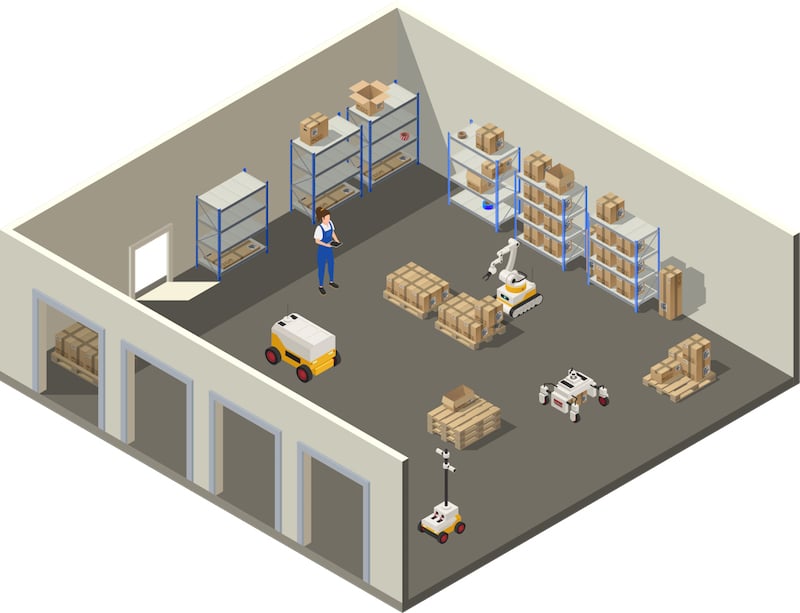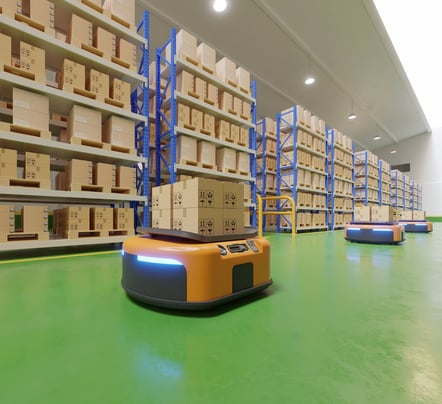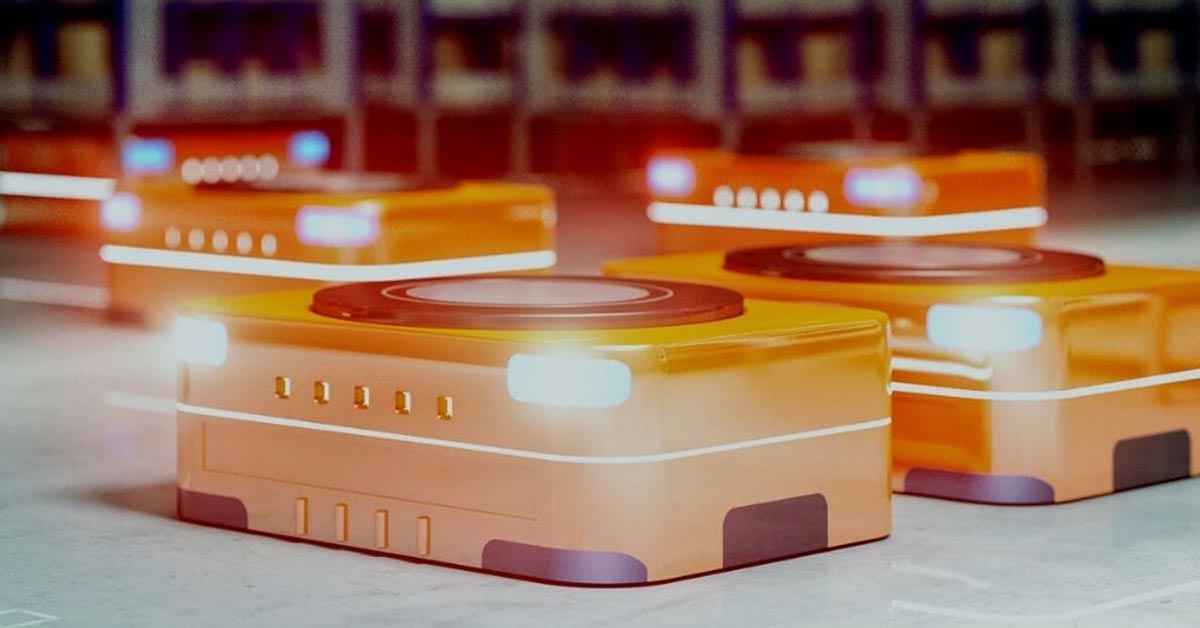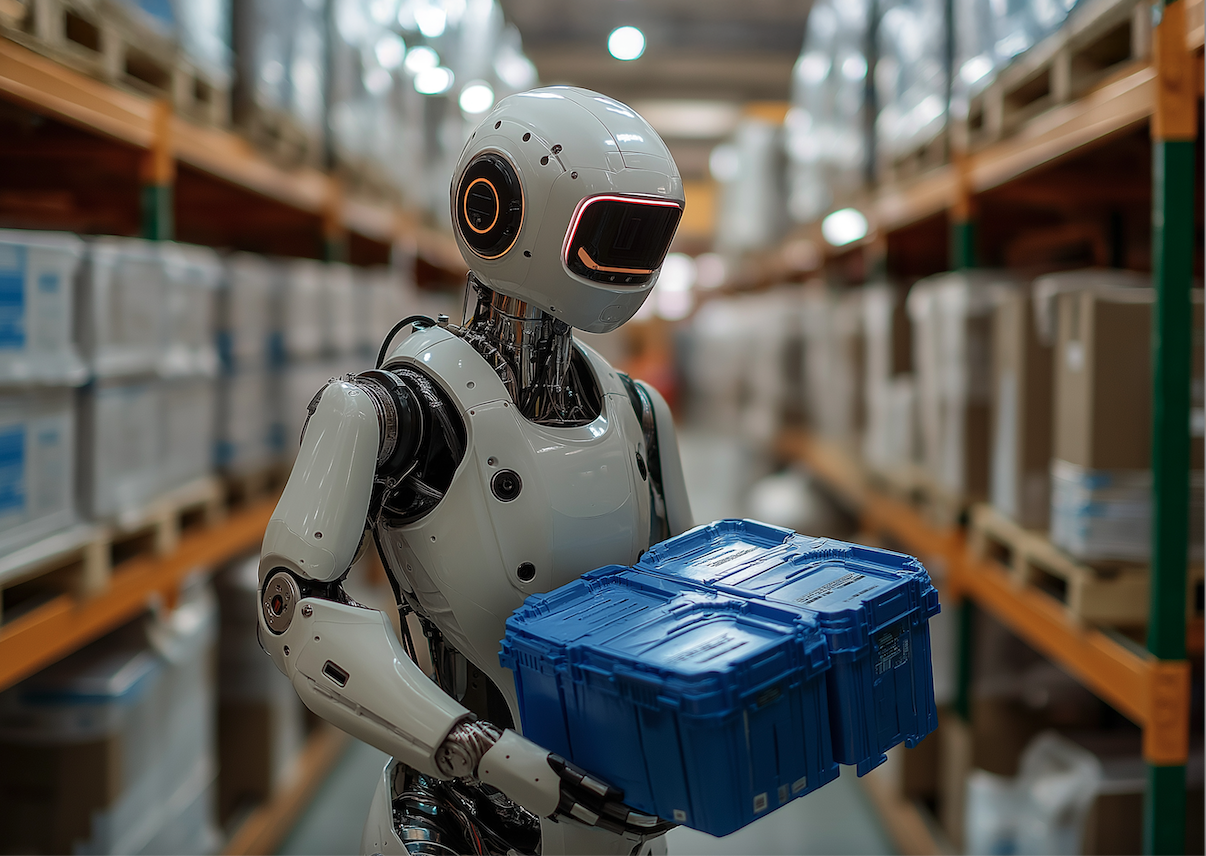
The pandemic has placed a huge burden on warehousing operations. With brick and mortar retail still shuttered in many parts of the country, online shopping is booming. Essential consumer items are in short supply. And the workforce remains compromised, as workers stay at home to manage health and childcare. The situation has led to a surge in warehouse automation, and it looks like robots will be a crucial part of the new normal for the supply chain.
Warehouse automation technology was on the rise well before the COVID outbreak. To alleviate the effects of labor shortages and keep up with the demands of e-commerce, solutions like automatic guided vehicles (AGVs), autonomous mobile robots (AMRs), automated forklifts and robotic storage and retrieval systems have seen rapid growth. A report from Logistics IQ predicted that the warehouse automation market, valued at $13 billion in 2018, would likely increase to $27 billion by 2025.
COVID has accelerated this already robust growth, with companies relying more heavily on robotic solutions to fulfill online shopping orders. Retailers are speeding up existing plans for automation–apparel giant Gap is working with Kindred AI to triple its number of piece-picking robots by autumn. On the delivery side of the supply chain, UPS recently unveiled its new warehouse execution system which includes a pilot program integrating autonomous mobile robots from Locus Robotics.
In a Robotic Industries Association discussion on COVID and autonomous mobile robots, Locus Robotics CEO Richard Falk described how the pandemic has shifted the way many decision-makers think about automation: “About three years ago… leaders would say ‘I’m not going to stick my job on the line to automate.’ And now what we’re finding, it’s really just the opposite: ‘If I don’t automate, and I don’t move in this direction, I don’t have a vision. Then, my job is on the line.’”
 Social Distancing
Social DistancingIn the close quarters of a warehouse, it can be challenging if not impossible for employees to work within new social distancing guidelines. Mobile robots can help people stay farther apart by literally filling in the gaps: transferring goods throughout the warehouse, receiving, shelving, packaging and acting as go-betweens. We’ve learned how quickly the virus can spread through facilities where workers are in close proximity, and robots could be a key to halting similar outbreaks.
Robots can also help warehouses maintain productivity with smaller teams by helping to make the best use of limited workers. “If you’re going to have limited people in the building, the last thing you want them to do is a simple task that can be automated,” Righthand Robotics’s Vince Martinelli said in a recent interview. In some cases, cloud-based robotic systems even make remote work a possibility, allowing team members to supervise work while staying out of high-risk areas.
Keeping Safety and Security Top of Mind
While robots have the potential to mitigate the risk of COVID spread, they can also alleviate other warehouse safety hazards. Workers can be safer and reduce injuries as robots take over heavy lifting, pulling carts, repetitive tasks and dangerous work. Autonomous mobile robots may help reduce the nearly 97,000 forklift-related injuries that occur each year.
But robots pose their own safety and security risks if they are not deployed properly. In the coming months, many workplaces will see hundreds of new robots working alongside their human coworkers. Safety must be top of mind so that robots can be stopped in the event of an emergency or unexpected situation. Cybersecurity and data protocols also need to be in place to ensure that connected machines can’t be hacked or tampered with by bad actors – internally or externally.
At FORT, we are at the forefront of robotics safety and security, and we work with warehousing and mobile robot companies looking to accelerate deployment in the safest way possible. Our decade of experience in safety has made us experts in planning for worst-case scenarios, so we are well-positioned to help customers mitigate risk and prepare for a variety of situations:
FORT’s technology is designed to solve for these challenges and more.
On the warehouse floor and beyond, it’s clear that robots are going to be a crucial part of the recovery for many businesses, and FORT is ready to aid in that transition. With the right safety and security system in place, robots and humans can collaborate in warehouses and any workplace to enable a safer, more productive, and healthier business.


